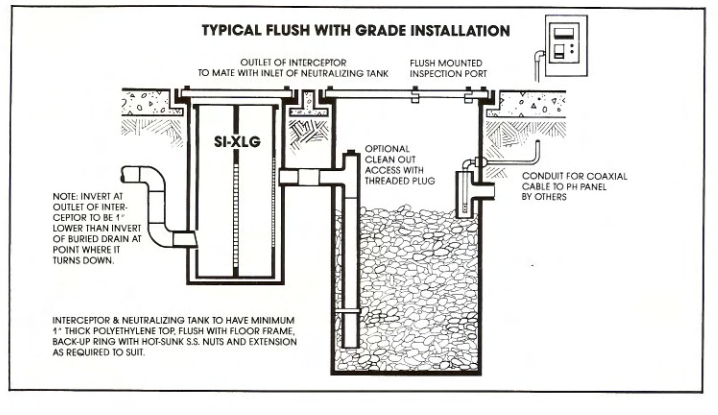Why use Acid Neutralization Tanks
These days, the importance of Sizing Acid Neutralization Tanks is becoming more relative. As society continues its use of products that produce hazardous waste, there’s no doubt that engineers will need to be on top of the difficulties that these chemicals can bring to the environment. In Canada alone, over 150 billion litres of untreated and under treated wastewater (sewage) is dumped into the waterways every year. This is a serious environmental, human health and economic issue, and across Canada municipalities are imposing codes restricting the discharge of foreign matter within sanitary sewer systems. How can engineers contribute? One method is the use of Acid Neutralizing Tanks.
Here’s how:
-
- They allow facilities to legitimately discharge their waste into municipal sewer systems, while conforming to local by-laws.
- The Limestone in each tank has the ability to neutralize, or partially neutralize strong acids as it is itself, an alkaline agent
- The neutralization process occurs when strong acids comes in contact with limestone
- Facilities in which acid neutralizing tanks are installed reduces corrosive attack on their drainage system
What you need to know
Gallons per hour of acid waste:
Pay close attention to the Gallons per hour of acid waste. If the information is not available, it is recommend that the tank(s) maintain a rate of one gallon per hour fixture unit.
PH levels of the acid waste:
For optimal results, a minimum of one hour of contact time, between the waste and neutralizing agent would be the proper use. Also, the Limestone would require a calcium carbonate equivalent contact in access of 90 percent, which is a slow process.

It is important to size and specify the right tank. Do not undersize tanks, as undersized tanks could allow harmful waste to go into the sanitary sewer system (because the sizing is based on contact time). Oversized tanks will allow for expansion of the lab system and ensure the proper acid neutralization. As a rule of thumb, if you are not sure of which size you should be choosing… bigger is always better, and oversized tanks will allow for expansion of the lab system and insure proper acid neutralization. However, you may want to avoid tanking on such an important decision. So why not use the ATS Spec tool? As a qualified engineer, you would decide on the final determination of tank size with the assistance of the ATS Email Spec Service. Our team will help you develop a customized specification, so you won’t have to worry that about choosing the correct size of acid neutralization tank.
Retention time:
The Retention time is one of the most important factors. As the PH of the acid waste rises, the rate of neutralization slows down; requiring a minimum of one hour of retention time.
Protect the Neutralizing System:
Keep in mind that design features such as a positive discharge into the inner basket, solids retention chamber and basket location guides, can provide optimum performance. Once again, you’ll want to ensure that you have to proper Acid Neutralization Tank size.

Why Sizing Acid Neutralization Tanks is important:
Last, but certainly not the least… sizing your tanks. As per the recommendations by ASPE, Chapter 32, tanks are to be appropriately sized to allow a “dwell time” of 2½ to 3 hours. Tanks should not be sized based on the number of sinks or drains alone. Certain type of waste may require particular needs and may not fall within the standard sink to tan ratio. You’ll want to use the following guidelines as closely as possible, and based on the guild line of dwell times, ASPE has created a sizing table, which is outlined below:

There can be dozens of configurations. Note that a 1.5- to 1200-gallon capacity, with pH monitoring systems, will help to ensure regulatory compliance.
Also, if you are not immediately certain of gallons per hour of waste, you should to go bigger than you may need when sizing Acid Neutralization Tanks.
We can always assist you with sizing your tanks to fit your needs. Download 10 formats, and contact our reps over the phone or by email for any assistance or inquires.
Should you require further assistance with sizing your Acid Neutralization Tank, or if you would like addition product information please contact a rep in your area.
Download the guide for acid neutralization by entering your email below.
Share this article


